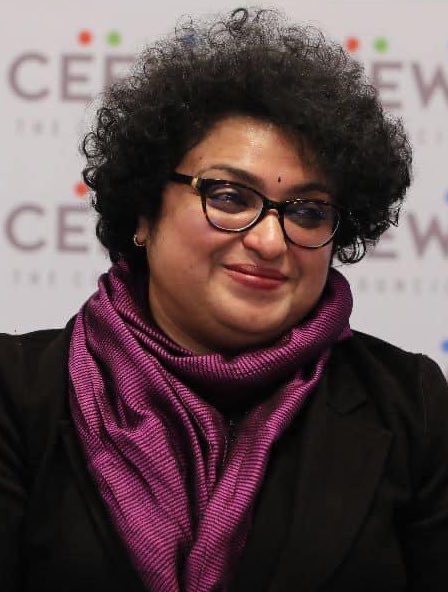(Co-authored with Emmanuel Thomas)
“Fiscal and monetary policy coordination is crucial to sustain the economic recovery. The fact that the wholesale price index (WPI) inflation rate was continuing at two-digit numbers for a year and the CPI has remained above the upper band of 6% for three consecutive months has been a cause for concern.”
The off-cycle meeting of the Monetary Policy Committee (MPC) on May 2 and May 4 and its decision to raise the repo rate to 4.4% sends a clear signal that the Reserve Bank of India (RBI) is committed to its mandate of keeping the consumer price index (CPI) inflation rate at 4% with an upper and lower band of plus or minus 2 percentage points. While stating that the policy remains accommodative, it has also expressed its intent to withdraw the accommodative stance. This policy response to global downward risks — including energy price volatility, supply chain disruptions due to geopolitical risks and macroeconomic uncertainties — is welcome.
The RBI has re-calibrated the monetary policy corridor. As per the recent MPC off-cycle meeting, the standing deposit facility (SDF) rate stands adjusted to 4.15% and the marginal standing facility (MSF) rate and the Bank Rate to 4.65%. Raising of the cash reserve ratio (CRR) to 4.5% is expected to absorb liquidity of ₹87,000 crore.
Till the eruption of conflict in Europe, what was expected on the monetary policy front was a gradual move away from an accommodative stance, spread over a year or so. But the continuing war has necessitated urgent steps. The RBI has thus responded to the charge that it is behind the curve on inflation.
Spectre of high inflation, low growth
High inflation and low growth stare at the global economy, adding to uncertainty. The West is fearing stagflation. The International Monetary Fund (IMF) has revised its global growth forecast for 2022 downwards by 0.8 percentage point to 3.6%, in a short period of three months.
The fact that the wholesale price index (WPI) inflation rate was continuing at two-digit numbers for a year and the CPI has remained above the upper band of 6% for three consecutive months has been a cause for concern. It is generally agreed that the WPI has a lagged effect on the CPI. So, the RBI will have to tighten the stance further if it is to bring down the CPI inflation rate within the band in the next few months. Hence, more tightening is on the way.
High levels of inflation will have a deleterious effect on investment and growth in India. Similarly, the high rate of inflation with very high food and energy components erodes the purchasing power of the common man, and will have serious welfare implications.
Supply side disruptions
The war in Ukraine has exacerbated the problems in the supply chain which was already disrupted by the COVID-19 pandemic. Hence, there is a general consensus that the primary cause of inflation today is located in the supply side. How far can monetary policy succeed in containing such inflation? If markets see inflation as transient, investment need not get affected significantly. But firms might find investing tough in times of serious supply side disruptions. The RBI hopes that the government capital expenditure will smoothen the transition.
Fiscal and monetary policy coordination is crucial to sustain the economic recovery. The Central government is slated to borrow upwards of ₹16 lakh crore in the current fiscal. This is an increase of about ₹70,000 crore compared to last year. High interest rates will definitely affect the fiscal space as interest payments will rise. There will be more questions on debt sustainability too as the growth rate plunges. Fiscal consolidation is a medium-term aim, with a target of reducing the fiscal deficit to 4.5% by 2025-26. The fiscal deficit is budgeted at 6.4% for the current year as fiscal policy has remained accommodative to support growth recovery. If the path towards fiscal consolidation is through tax buoyancy rather than expenditure compression, the quality of fiscal consolidation will not suffer. Figures of goods and services tax (GST) collections in recent months are encouraging.
Gauging the global risks
The RBI has acknowledged that the global risks and disruptions caused by the Russia-Ukraine crisis have impacted the growth and inflation outlook. It has revised its inflation projection from 4.5% to 5.7% for the financial year, based on an expected average global crude oil price of $100 per barrel. If the oil prices go higher, it will affect projections. However, the RBI is ready with a robust toolkit to deal with mounting inflation and to support the growth recovery process. But both the government and the RBI are on a tight rope.
The good news is the impact of the upward repo rate revision on finalisation of savings, with the commercial banks raising deposit rates, would cheer depositors. However, loans can become costlier, especially the loans taken on floating rates of interest.
This article was first published in The Hindu, on May 20th 2022.
Lekha Chakraborty is Professor, National Institute of Public Finance and Policy, New Delhi; and a member of the Board of Management, International Institute of Public Finance, Munich
Emmanuel Thomas is a doctoral fellow, Centre for Economic Studies and Planning, JNU, New Delhi.
The views expressed in the post are those of the authors only. No responsibility for them should be attributed to NIPFP.

